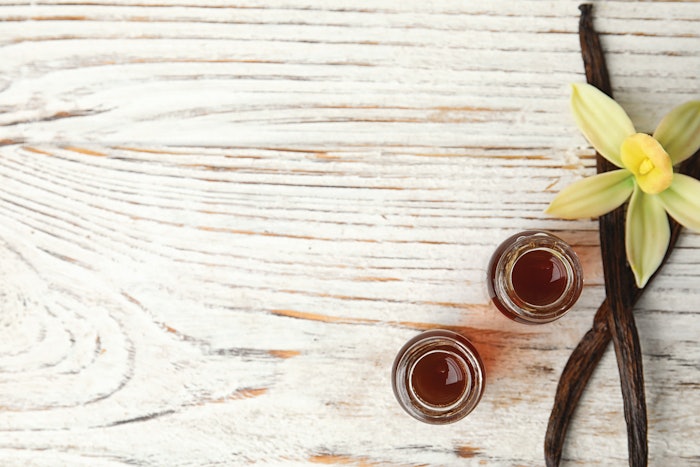
We have an almost unspoken understanding that many aspects of flavor creation involve significant trade-offs. In the world of phenolic smoke notes, the most common trade-off is between strength and harshness. Many of the most powerful phenols can become unpleasantly pungent if even slightly overdosed.
2-Methoxy-4-vinylphenol (FEMA# 2675, CAS# 7786-61-0) is a welcome exception to this rule. It is powerful, authentically smoky and lacks nasty, sharp edges. This happy combination allows 2-methoxy 4-vinyl phenol to be applied to an unusually wide range of flavors.
Note that the dose rates given throughout this article are the levels suggested for use in flavors intended to be dosed at 0.05% in ready-to-drink beverages or in a simple bouillon.
Savory Flavors
Asparagus: My seaside hometown in the northwest of England had only one culinary claim to fame—asparagus. Sandy soil is the perfect environment for the fussy plant. The character of asparagus has a slight hint of smoke, and 10 ppm of 2-methoxy-4-vinylphenol catches it to perfection.
Bacon: Setting a level for a smoke ingredient in bacon flavors is difficult, but 100 ppm is a reasonable starting point.
Chicken: A slightly lower level, around 50 ppm, has a similar effect in all styles of chicken flavors.
Dried mushroom: 2-Methoxy-4-vinylphenol can make an interesting contribution to mushroom flavors, most notable in dried mushroom flavors at 20 ppm.
Fried garlic: Much more modest levels, nearer 10 ppm, work well in fried garlic flavors.
Fried potato: The power of this ingredient is particularly useful in fried potato flavors. An ideal level is 50 ppm.
Toasted onion: Toasted onion flavors work in a similar way to fried garlic flavors and fairly similar levels, perhaps up to 15 ppm, of this raw material are effective.
Peppers: All types of pepper flavors need a subtle smoke note, irrespective of raw or cooked profile. Levels of 50 ppm work well in bell pepper flavors and a higher level, between 80 ppm and 100 ppm, work well in jalapeño flavors.
Roast beef: Levels of 80 ppm of 2-methoxy 4-vinyl phenol add an effective smoky hint to roast beef flavors.
Seafood and smoked salmon: Levels of 2-methoxy 4-vinyl phenol in smoked salmon flavors vary considerably in line with the profile, but 20 ppm is a reasonable starting point.
Sesame: 2-Methoxy-4-vinylphenol has a key role in sesame flavors and levels of use range up to 200 ppm.
Smoke: Levels of 200 ppm are a good starting point for this raw material in smoke flavors, but even higher levels can be effective.
Soy sauce: Levels of this raw material at 15 ppm work well in all soy sauce flavors but are arguably most effective in representing the profile of dark soy sauce.
Tomato: A modest level of 2-methoxy-4-vinylphenol, around 30 ppm, contributes to fresh tomato flavors and higher levels, up to 100 ppm, are effective in cooked or processed tomato flavors.
For the full article, please check out the Perfumer & Flavorist+ January 2022 issue.










